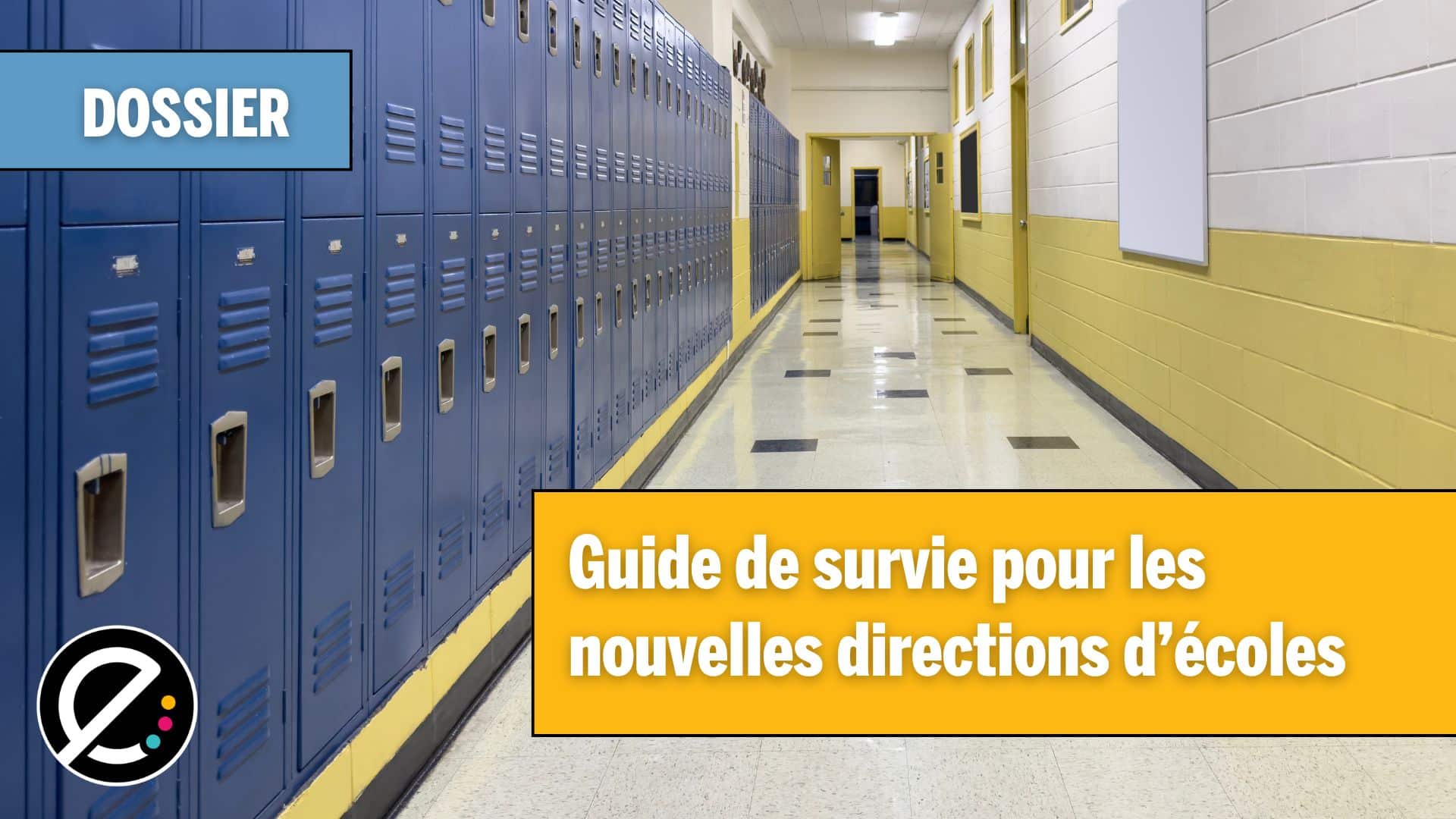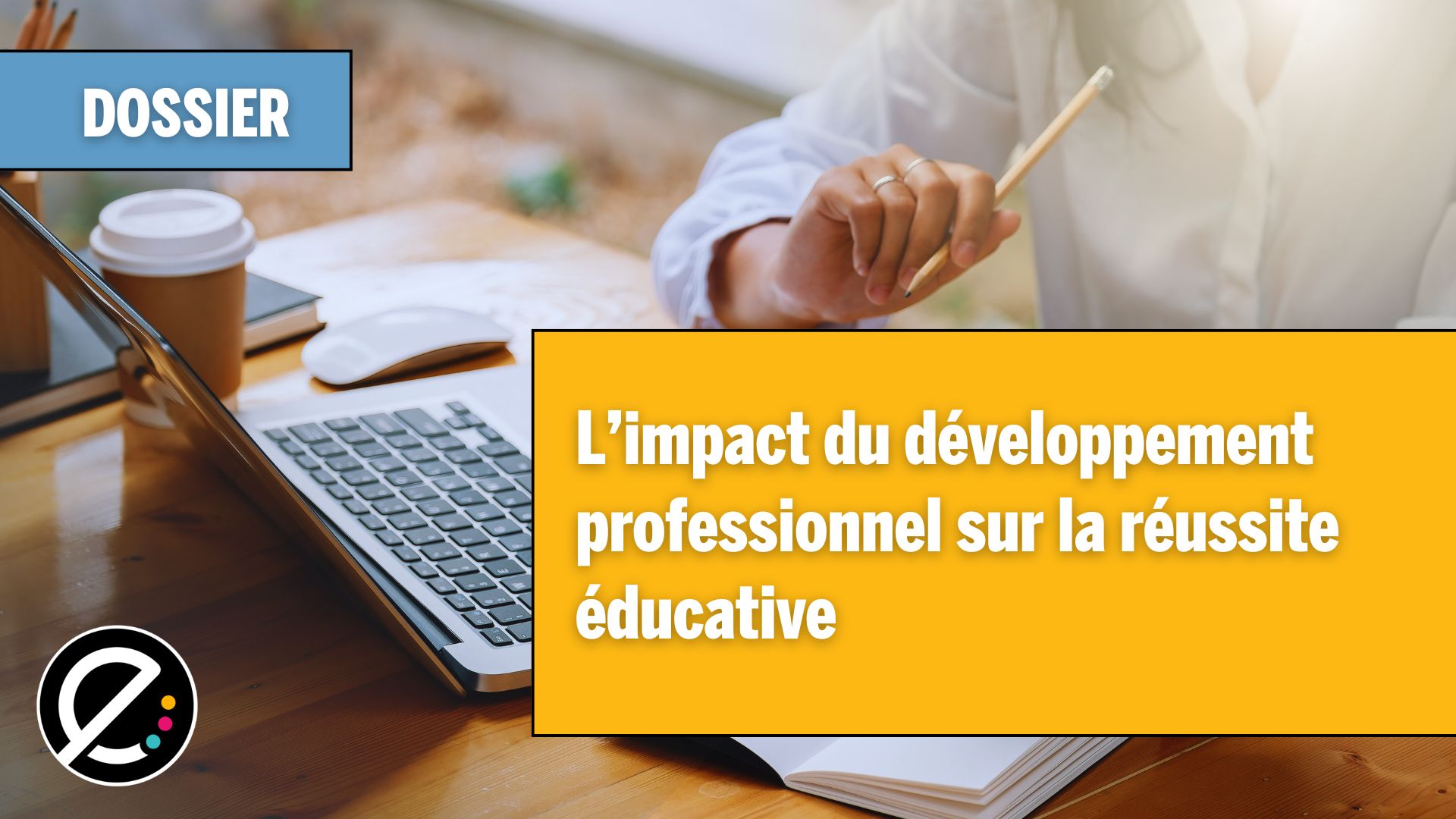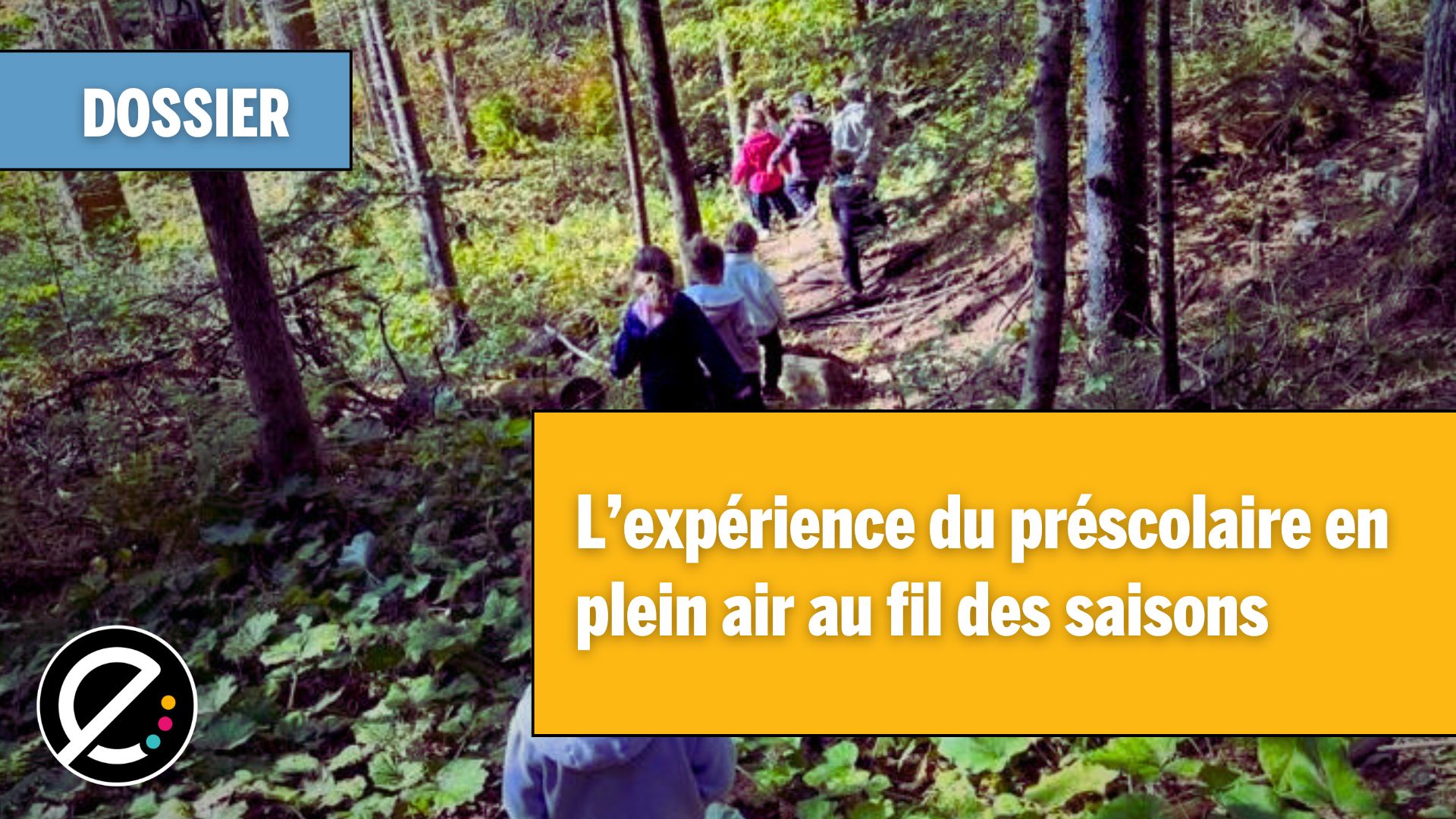Un dossier conjoint de Carrefour éducation et L’École branchée
« Il faut tout un village pour élever un enfant. » Ce proverbe africain prend tout son sens lorsque vient le temps d’aborder le thème de la persévérance scolaire. Effectivement, les éléments susceptibles de favoriser la poursuite du cheminement scolaire d’un élève sont tout aussi diversifiés que le nombre d’élève eux-mêmes.
La persévérance scolaire est un phénomène complexe où chaque variable (humaine ou contextuelle) joue un rôle déterminant. Le milieu scolaire est bien sûr l’une de ces variables essentielles et il est possible d’identifier des constantes ainsi que de cibler des pratiques pédagogiques ayant un plus fort potentiel mobilisateur pour les élèves. Plus le milieu sera dynamique et stimulant, plus le niveau d’engagement des élèves sera à la hausse.
Avec la fermeture des écoles au printemps dernier et la mise en place de l’enseignement à distance, plusieurs personnes ont craint pour la motivation des jeunes et donc pour leur persévérance scolaire. Tout n’est pas noir ou blanc à ce sujet, selon les experts à qui nous avons parlé, et il est toujours possible que le contexte génère de belles opportunités.
Bien que le thème de la persévérance scolaire soit bien documenté, l’École branchée a voulu jeter un regard nouveau en tenant compte de la situation actuelle et en traitant des déterminants associés à l’école en particulier. Nous vous proposons également quelques ressources complémentaires.
Table des matières
– Portrait actuel au Québec : données factuelles et état des lieux
– Lexique de la persévérance scolaire
– Les facteurs de protection contre le décrochage scolaire
– Des pratiques gagnantes pour favoriser la persévérance scolaire
– Des projets qui font la différence
– Les défis supplémentaires de l’enseignement à distance
1- Portrait actuel au Québec : données factuelles et état des lieux
Les données les plus fiables et les plus récentes sur le taux de diplomation proviennent de Statistique Canada. En 2016-2017, le taux d’obtention du diplôme d’études secondaires (DES) à temps était de 75 % au Québec (69 % chez les garçons et 80% chez les filles). En regardant le taux d’obtention du diplôme d’études secondaires à temps prolongé (jusqu’à deux ans de plus), celui-ci grimpe à 83 % (78 % chez les garçons et 90 % chez les filles).
Objectivement, ces taux sont toujours parmi les plus bas au Canada; la moyenne canadienne étant de 80 % pour le taux d’obtention du DES à temps et de 89 % à temps prolongé. Cependant, on note une constante hausse du taux de diplomation au Québec, ce qui démontre que la situation s’améliore. Il est possible de consulter l’ensemble des statistiques par province sur le site web de Statistique Canada.
Importante précision ici : bien que les jeunes Québécois puissent paraître comme des derniers de classe lorsqu’on regarde simplement les chiffres, Frédéric Guay, titulaire de la Chaire de recherche du Canada en motivation, persévérance et réussite scolaires et professeur à l’Université Laval apporte un bémol : le taux de diplomation ne dit pas tout sur nos élèves québécois. Ainsi, d’autres éléments doivent être pris en considération avant de se désoler face aux statistiques canadiennes.
D’abord, ailleurs au pays, obtenir un DES requière six ans d’études, en temps normal, contre cinq au Québec. De plus, la note de passage est de 50 % (et non de 60 % comme au Québec). Le taux de réussite peut alors être perçu comme supérieur dans ces provinces en raison de ces deux variables.
« Il faut faire très attention aux comparaisons. Dans l’état actuel, cette différence fait en sorte qu’on ne compare pas adéquatement les élèves d’une province à l’autre. Éventuellement, il faudrait viser l’équivalence entre les provinces afin que les chiffres soient représentatifs », croit M. Guay.
Même Statistique Canada émet un avertissement sur son site web : « Les cheminements scolaires, les notes de passage et les exigences relatives aux matières et les groupes d’élèves à l’étude peuvent varier d’une province à l’autre ».
Ensuite, il ne faut pas confondre taux de diplomation plus faible avec mauvaise performance académique. « Les élèves québécois performent toujours très bien aux enquêtes internationales, comme le PISA, et souvent même mieux que les autres élèves canadiens. Il est donc permis de se demander si nous sommes plus exigeants que les autres provinces. Pas pour baisser les standards mais pour au moins en être conscient avant de comparer sans se poser d’autres questions », fait remarquer le professeur Guay.
En complément :
– « Non, le Québec n’a pas le pire système d’éducation », Francis Vailles, 10 juin 2020, La Presse
– « Bonnes et mauvaises nouvelles sur le décrochage », Francis Vailles, 24 janvier 2020, La Presse
2- Lexique de la persévérance scolaire
Lorsqu’on traite du sujet de la persévérance scolaire (ou de son contraire, le décrochage), des termes tendent à revenir constamment dans les écrits et les discours. Avant d’aller plus loin, il apparaît nécessaire de bien définir chacun d’eux.
· Aspiration
Avoir de l’aspiration signifie être capable de se projeter dans l’avenir, d’avoir un objectif clair, des rêves et de les nourrir. Le fait d’avoir un but précis à atteindre favorise la motivation et l’engagement.
· Motivation
La motivation peut être définie comme le processus responsable du déclenchement, du maintien, de l’entretien ou de la cessation d’une conduite. Elle est en quelque sorte la force qui pousse à agir et penser d’une manière ou d’une autre. Elle devient un déterminant qui aidera à la persévérance et à la réussite. La motivation conduit à l’engagement.
· Engagement
L’engagement est une décision volontaire de participation à un projet, à une action, ou autre, s’inscrivant dans le temps. Il implique une participation active. L’engagement est donc un autre déterminant qui mènera à la persévérance et à la réussite.
· Persévérance
La persévérance fait référence au fait de poursuivre un cheminement dans le but de le compléter, d’aller au bout de la démarche. La persévérance scolaire est donc la poursuite d’un programme d’études en vue de l’obtention d’une reconnaissance des acquis (diplôme, certificat, attestation d’études, etc.). Son contraire sera l’abandon scolaire qui fait référence à l’interruption des études avant d’avoir obtenu la reconnaissance des acquis. Le terme décrochage scolaire est la plupart du temps associé aux études secondaires.
· Réussite
La réussite est le fait de terminer avec succès une étape, un projet, etc. La réussite scolaire est l’achèvement avec succès d’un parcours scolaire. La réussite éducative est un concept beaucoup plus large qui inclut également d’autres facteurs qui jouent un rôle dans le développement d’un enfant : famille, communauté, etc.
En complément :
– « De la motivation à l’engagement », Séverine Parent, printemps 2014, Pédagogie collégiale
– « L’ABC de la persévérance scolaire », Comité régionale pour la valorisation de l’éducation, 2020
– « Portrait », Conseil régional de prévention de l’abandon scolaire Saguenay Lac-St-Jean, 2020
3- Les facteurs de protection contre le décrochage scolaire
Avant de pouvoir répondre à la grande question : pourquoi persévère-t-on?, il faut d’abord chercher à mieux comprendre les facteurs de protection contre l’abandon scolaire, soit tout facteur qui augmente la probabilité qu’un jeune développe sa motivation, s’engage activement dans ses études et persévère jusqu’à l’obtention de son diplôme.
Parmi ses facteurs, le milieu familial, l’environnement socio-économique (quartier, communauté), le marché du travail (pour les élèves qui travaillent à temps partiel), l’entourage social (amis et autres liens dans le cadre d’activités de loisirs par exemple) et bien sûr le milieu scolaire. Ceux-ci ont été abondamment documentés au cours des années.
Chaque facteur peut en influencer un autre et leurs effets combinés dépendront également de la façon dont le jeune les perçoit en tant qu’individu. Toutes les combinaisons sont donc possibles et il n’existe aucune formule miracle. Par contre, en matière d’intervention, certaines pratiques s’avèrent plus porteuses que d’autres comme nous le verrons dans la prochaine section.
Le rôle de l’école
Plutôt que d’essayer d’intervenir sur tous les fronts à la fois, des spécialistes font le pari de miser davantage sur le milieu scolaire. Climat et ambiance générale, pratique de gestion (soutien aux éducateurs et aux jeunes de la part de la direction, gestion de classe de la part des enseignants), pratiques pédagogiques, relations entre éducateurs et élèves sont des éléments qui entrent alors en scène.
« La principale prise que nous avons comme société est de miser sur notre système éducatif; les centres de la petite enfance et l’école. Ces lieux peuvent jouer un rôle déterminant pour atténuer les inégalités et les vulnérabilités des enfants. Plus un milieu sera riche et stimulant, plus il favorisera le développement de l’enfant à son plein potentiel », fait valoir M. Guay.
Il précise même : « Au-delà du milieu scolaire dans son ensemble, l’effet enseignant représentera à lui seul jusqu’à 30 % des facteurs de protection d’un jeune ». De façon générale, l’effet enseignant est définit comme l’influence qu’un enseignant exerce sur l’apprentissage, le développement et la réussite des élèves. Un groupe de professeurs au Département des sciences de l’éducation à l’Université du Québec à Chicoutimi (UQAC) ont bien défini cet effet dans une lettre ouverte publiée en février 2020 dans Le Quotidien.
À l’école, une attention particulière devrait aussi être porté par les enseignants aux cercles d’amis qui se créent parmi les élèves. Marie-Hélène Veronneau, professeure au département de psychologie à l’Université du Québec à Montréal, étudie précisément le rôle des pairs dans la persévérance scolaire.
Elle a largement constaté l’effet d’entraînement (positif ou négatif) que les amis peuvent avoir sur les jeunes. Une étude publiée en 2019 montre que le rendement scolaire vers le début du secondaire semble être influencé positivement par l’affiliation avec des amis qui présentent un bon rendement, mais influencé négativement par l’affiliation avec des amis qui ont des problèmes de comportement.
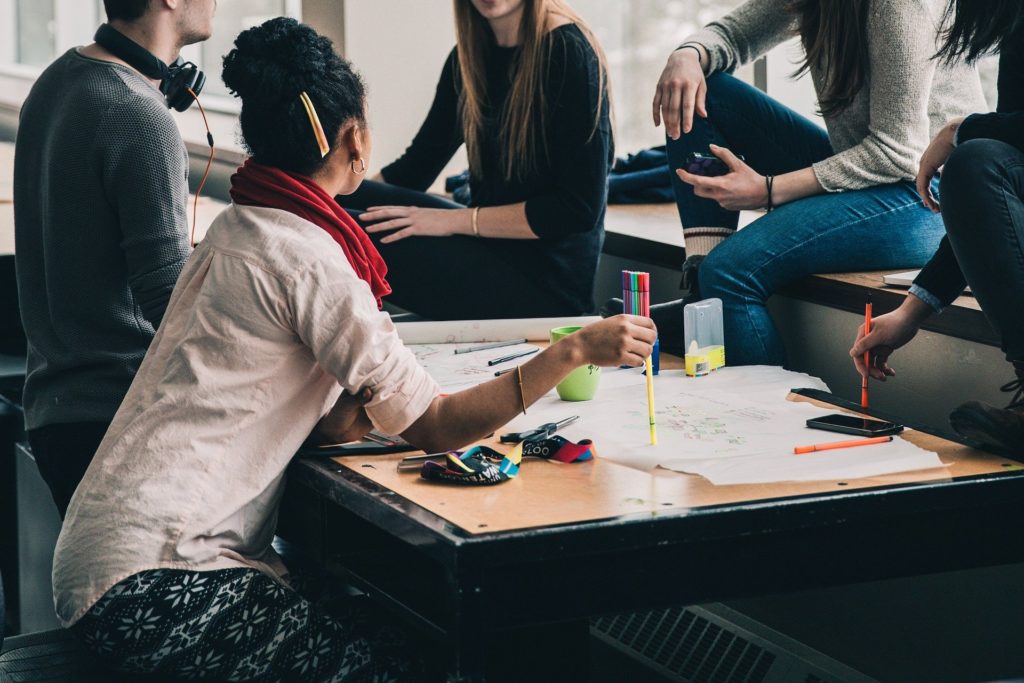
« Savoir bien s’entourer, c’est une des clés vers la réussite! » Ainsi, les enseignants peuvent certainement jouer un rôle pour guider les élèves dans leur fréquentation: en gardant un oeil attentif sur la dynamique dans les petits groupes qui se forment dans une classe ou dans la cour d’école, en discutant de certaines situations observées avec les élèves, en amenant ceux-ci à travailler en équipe avec d’autres élèves en dehors de leur cercle d’amis habituel.
Lorsque des situations problématiques (influence négative d’un pair, par exemple) surviennent, il est judicieux de rencontrer les élèves pour mieux comprendre le contexte, les amener à réfléchir sur la définition de l’amitié. Finalement, les parents devraient aussi être mis à profit afin qu’ils puissent influencer positivement leur enfant et l’amener, lorsque nécessaire, à reconsidérer certaines fréquentations.
Les types de motivation
Parmi les facteurs de protection, il est important de revenir un instant sur la notion de motivation. Celle-ci est la force motrice qui pousse à se mettre en action pour atteindre un but. Par contre, les sources de motivation sont diverses et ne donnent pas toutes les mêmes résultats.
« La qualité de la motivation aura un effet sur le niveau d’engagement et la persévérance à long terme. Si l’élève est motivé simplement par le désir de se conformer, d’obtenir une récompense ou d’éviter une punition, sa motivation risque de s’effriter avec le temps. Il lui sera plus difficile de maintenir son intérêt », indique Mme Veronneau.
Et à contrario, « si l’élève est motivé par lui-même, parce qu’il aime ce qu’il fait, qu’il en comprend le sens et qu’il se fixe des objectifs à atteindre, sa motivation pourra entraîner un plus haut niveau d’engagement et il pourrait même devenir une source de motivation positive pour ses pairs ».
L’un des rôles de l’école serait donc de permettre aux enfants de développer cette motivation intrinsèque, qui leur permettra de vivre un engagement volontaire et durable dans leur parcours scolaire.
En complément :
– « Déterminants de la persévérance scolaire », Partenaire pour la réussite éducative en Chaudière-Appalaches (PRECA), 2020
– « Student Motivation and Associated Outcomes: A Meta-Analysis from Self-Determination Theory », Étude, Joshua L. Howard, Julien S. Bureau, Frédéric Guay, Jane X.Y. Chong, Richard M. Ryan, Août 2020
– « How Do Individual Predispositions and Family Dynamics Contribute to Academic Adjustment Through the Middle School Years? The Mediating Role of Friends’ Characteristics », Étude, Marie Claire Vaillancourt, Alexandra Oliveira Paiva, Marie-Hélène Véronneau, Thomas J. Dishion, Mai 2018
4- Des pratiques gagnantes pour favoriser la persévérance scolaire
En milieu scolaire, des pratiques pédagogiques sont de plus en plus identifiées comme favorisant la persévérance scolaire et elles ont fait leur preuve pour tous les élèves; pas uniquement pour ceux qui sont plus à risque de décrocher.
Frédéric Guay mentionne quelques approches favorables comme:
– Créer des environnements qui ne soient pas contrôlant ni trop compétitifs;
– Multiplier les exemples concrets et les mises en application explicites des concepts enseigner (faire du sens);
– Miser sur la différenciation et la rétroaction personnalisée;
– Faire la promotion de modèles qui soient atteignables et réalistes (sans pour autant diminuer les aspirations).
Il a aussi développé un top 3 des pratiques gagnantes qu’il nous partage:
1- Favoriser l’autonomie des élèves
Offrir des choix, encourager l’initiative, respecter les opinions et encourager le partage de point de vue, faire confiance et donner confiance.
2- Soutenir la perception qu’à l’élève de sa compétence
Valoriser, encourager, reconnaître les bons coups, soulever les points positifs en grand groupe, soulever les points négatifs individuellement et donner des trucs pour s’améliorer.
3- Créer un lien positif avec les élèves
Tisser un sentiment d’appartenance à l’école et au groupe, faire vivre des expériences positives et plaisantes.
De façon plus formelle, ce top 3 rappelle la conception universelle de l’apprentissage (CUA), qui se veut très inclusive, en misant sur les capacités des élèves et leurs forces afin de leur donner confiance.
Dans cette approche, l’enseignant « place tous les apprenants sur un pied d’égalité dans un esprit de justice et d’équité. Dès lors, tous voient leurs différences acceptées voire même valorisées. C’est là un élément fondamental qui vise le développement du potentiel et de l’autonomie des personnes (je peux le faire) de même que le développement du sentiment d’efficacité personnelle », lit-on dans un dossier produit par le Consortium d’animation sur la persévérance et la réussite en enseignement supérieur.
Également, la CUA encourage la mise en oeuvre de pratiques pédagogiques variées:
- présenter l’information et la matière de différentes façons;
- différencier les moyens utilisés par les élèves pour démontrer leur savoir;
- stimuler l’intérêt et la motivation d’apprendre.
Ceci afin de « relever le défi de la diversité en offrant du matériel, des techniques et des stratégies pédagogiques souples qui permettent de différencier l’enseignement en fonction des besoins des élèves », tel que l’indique Cindy Perras, conseillère pédagogique sur le site de TA@l’école.
Dans tous les cas, au-delà de la transmission de notions académiques, l’école et l’enseignant prennent la posture de guides qui accompagnent l’élève dans son cheminement personnel et ses apprentissages, qui l’aident à découvrir ses forces et l’encouragent à trouver les sujets qui l’intéressent plus particulièrement, ceux qui le passionnent. Bref, la relation humaine est plus que déterminante dans l’ensemble du parcours scolaire.
Intervention 101
Malgré la mise en place de ces pratiques, il arrive néanmoins que des élèves éprouvent des difficultés. Troubles d’apprentissage, faible estime de soi, problèmes familiaux, relations avec les pairs hasardeuses, etc.; les facteurs sont encore une fois nombreux.
« Dès que quelqu’un détecte un risque par rapport à un jeune, il doit se mettre en action pour trouver des solutions. Que ce soit à l’école, à la maison ou même dans son entourage », soutient Mme Veronneau.
Selon elle, il est primordial d’intervenir le plus tôt possible pour éviter une accumulation de facteurs et des situations qui feront glisser le jeune vers un abandon. Pour illustrer son propos, elle cite une étude réalisée en 2015 démontrant que les élèves de l’école primaire perçus par leurs pairs comme étant agressifs et ceux qui présentaient déjà des difficultés scolaires avaient de la difficulté à persévérer même quand leurs parents étaient plus scolarisés que la moyenne. « Pour ces élèves, l’école doit agir comme facteur de protection. »
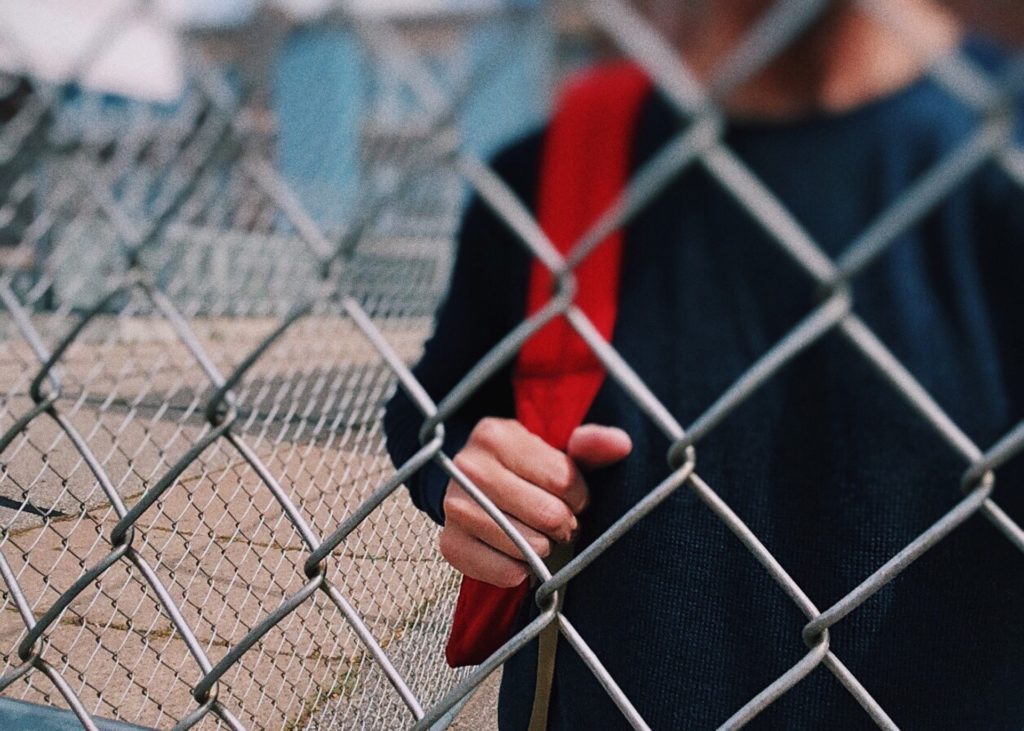
En tout temps, les interventions très serrées où plusieurs partenaires se mobilisent pour accompagner le jeune sont très porteuses. « La collaboration parents-école prend alors tout son sens. Les actions doivent être concertées. Le parent doit être un allié ou tout autre personne significative pour le jeune (entraîneur, mentor, etc.). Même si cela peut représenter un défi dans certaines situations, il est essentiel de bâtir un pont solide entre l’école et la maison. »
En matière d’intervention, quatre pratiques, mises de l’avant par l’Institute of Education Sciences aux États-Unis, sont également reconnues au Québec par le réseau PÉRISCOPE (Plateforme Échange, Recherche et Intervention sur la SCOlarité : Persévérance Et réussite) :
1- Faire le suivi du progrès de tous les élèves et intervenir de manière proactive lorsque des élèves montrent des signes précoces d’absentéisme ou de difficultés scolaires ou comportementales.
2- Fournir un soutien intensif et individualisé aux élèves ayant dévié de leur parcours scolaire et qui font face à d’importants défis pour réussir.
3- Favoriser l’engagement des élèves en offrant un curriculum et des programmes qui relient le travail scolaire à la réussite au collégial ou à une carrière et qui permettent le développement des compétences des élèves à gérer des défis intra et extra-scolaires.
4- Pour les écoles comptant plusieurs élèves à risque de décrochage scolaire, créer de petites communautés d’appartenance afin de faciliter le suivi et le soutien.
Par contre, quoi qu’on en dise, autant en matière de prévention que d’intervention, il semble qu’aucune pratique ne se démarque plus qu’une autre. « Les administrateurs scolaires et les décideurs disposent d’une grande variété de possibilités. La qualité de la mise en œuvre d’un programme sera beaucoup plus déterminante que le choix du programme lui-même. Ainsi, les programmes qui mobilisent l’ensemble du milieu et qui sont implantés de façon permanente auront plus de succès », conclut une étude sur le décrochage scolaire à laquelle a participé M. Guay en 2011.
Donc, il appartient à chaque établissement de choisir ou de développer des façons de faire qui tiendront compte des particularités de son milieu et des caractéristiques propres à la situation vécue. Il ne devrait jamais y avoir de solution mur à mur.
En complément:
– « La conception universelle de l’apprentissage », Dossier, Consortium d’animation sur la persévérance et la réussite en enseignement supérieur, avril 2015
– « Conception universelle de l’apprentissage », TA@l’école, mai 2014
– « Preventing Dropout in Secondary Schools », Guide pratique, Institute of Education Sciences, US Department of Education, Septembre 2017
– « Quatre pistes d’action pour contrer le décrochage scolaire », Centre de transfert pour la réussite éducative au Québec (CTREQ), juin 2018
– « Dropout prevention and intervention programs: effects on school completion and dropout among school-aged children and youth », Étude, Sandra Jo Wilson, Mark Lipsey, Emily Tanner-Smith, Chiungjung Huang Huang, Katarzyna T. Steinka-Fry, 2011
– « Emerging psychopathology moderates upward social mobility: The intergenerational (dis)continuity of socioeconomic status », Marie-Hélène Véronneau, Lisa A. Serbin, Dale M. Stack, Jane Ledingham et Alex E. Schwartzman, Novembre 2015
– « Prévention auprès des familles et des enfants », présentation de George M. Tarabulsy, PhD, École de psychologie de l’Université Laval, avril 2016
5- Des projets qui font la différence
Preuve que les interventions doivent tenir compte de la réalité de chaque milieu, au fils des années, de nombreuses initiatives régionales ont vu le jour partout à travers la province de Québec afin de contrer le décrochage scolaire et de favoriser la persévérance.
« En matière de conciliation travail-études chez les élèves du secondaire, par exemple, on n’intervient pas de la même façon en région métropolitaine que rurale. Le type d’employeur n’est pas le même, les réalités locales non plus », illustre Andrée Mayer-Périard, présidente du Réseau québécois pour la réussite éducative (RQRÉ).
Créé en 2004 afin d’encourager le partage de bonnes pratiques entre les régions et de les lier entre elles sur des enjeux communs, le RQRÉ est constitué d’une multitude d’organismes régionaux, appelés instances régionales de concertation.
« Notre ADN est beaucoup plus régional que national. Il y a quand même un besoin de se rassembler pour réaliser des actions concertées et continuer de marteler que la réussite scolaire doit être au sommet de nos priorités comme société », indique la présidente. C’est ainsi que le RQRS présente les initiatives nationales Employeurs engagés et les Journées de la persévérance scolaire.
Même constat du côté du Regroupement des organismes communautaires québécois de lutte au décrochage (ROCLD). Celui-ci s’est donné comme mission de favoriser la concertation et les échanges entre les organismes communautaires qui travaillent à la problématique du décrochage scolaire (14 régions sont représentées au sein du ROCLD). À chaque année, une Rencontre nationale de lutte au décrochage donne l’occasion à ces acteurs en provenance des communautés autochtones, anglophones et francophones de mieux comprendre certains défis, d’échanger sur des pratiques d’intervention et sur des pistes de solutions.
D’une association à l’autre, le constat est le même: de nombreux acteurs régionaux (chambres de commerce, organismes communautaires et d’entraide sociale, carrefour jeunesse-emploi, etc.) s’intéressent désormais à la persévérance scolaire et développent des projets motivants pour les jeunes. Ce qui signifie que les communautés s’approprient de plus en plus la thématique, concrétisant la vision qu’il faut tout un village pour élever un enfant.
Également, l’avis est unanime: les projets les plus porteurs sont ceux qui sont les mieux arrimés avec le milieu scolaire. « Le lien avec l’école est nécessaire », affirme Mme Mayer-Périard.
« Une bonne collaboration entre le milieu scolaire et les organismes communautaires pour répondre aux besoins des jeunes et soutenir leur réussite scolaire et éducative est importante », soutient Michael Canuel, président de LEARN Québec, le réseau des ressources pour l’éducation anglophone, partenaire du ROCLD.
Quelques initiatives qui ont du succès
Voici quelques projets qui font parler d’eux parce qu’ils donnent des résultats. Chacun à leur façon, ils proposent une diversité de possibilités aux jeunes pour leur permettre de découvrir de nouvelles passions, de s’ouvrir à de nouveaux horizons. Ils leur permettent de se sentir compétents en réalisant des tâches concrètes, de faire des liens avec leurs apprentissages scolaires et de développer une plus grande confiance en eux.
Fusion jeunesse
Cet organisme de bienfaisance est principalement connu pour son Festival de robotique FIRST, une compétition des jeunes et leur robot. Il offre aussi une multitude de projets aux écoles, en lien avec les arts, les sciences, le design et l’entrepreneuriat. L’offre a été adapté en formule virtuelle ou hybride. Offert au Québec, en Ontario, au Nouveau-Brunswick et en France.
Passeport pour la réussite
Cet organisme offre du soutien et des ressources aux jeunes issus de communautés à faible revenu afin de les aider à obtenir leur diplôme d’études secondaires et briser le cycle de la pauvreté. Tutorat et mentorat après les cours sont offerts, de même que des bons pour des repas, de l’aide financière et des services de planification de carrière. Plusieurs partenaires à travers le Canada.
Je passe-partout
Situé dans le quartier Hochelaga-Maisonneuve, cet organisme aide les jeunes à échapper à la pauvreté en favorisant la réussite scolaire au moyen d’un service d’aide aux devoirs à l’école et d’un accompagnement à leurs parents au moment de la période d’étude à la maison, et cela, dans un contexte de partenariat avec l’école, le CLSC et le milieu communautaire.
Kids Code jeunesse
Cet organisme canadien offre des programmes en lien avec le développement des compétences numériques. Ceux-ci contribuent notamment à intégrer le code, la pensée informatique et l’informatique physique aux activités scolaires. Une attention particulière est faite aux filles afin qu’elles soient de plus en plus nombreuses à s’intéresser à l’univers technologiques. Kids Code jeunesse vient de lancer un défi pour amener les élèves à imaginer des solutions en lien avec des problématiques environnementales. Partout au Canada, dans les deux langues.
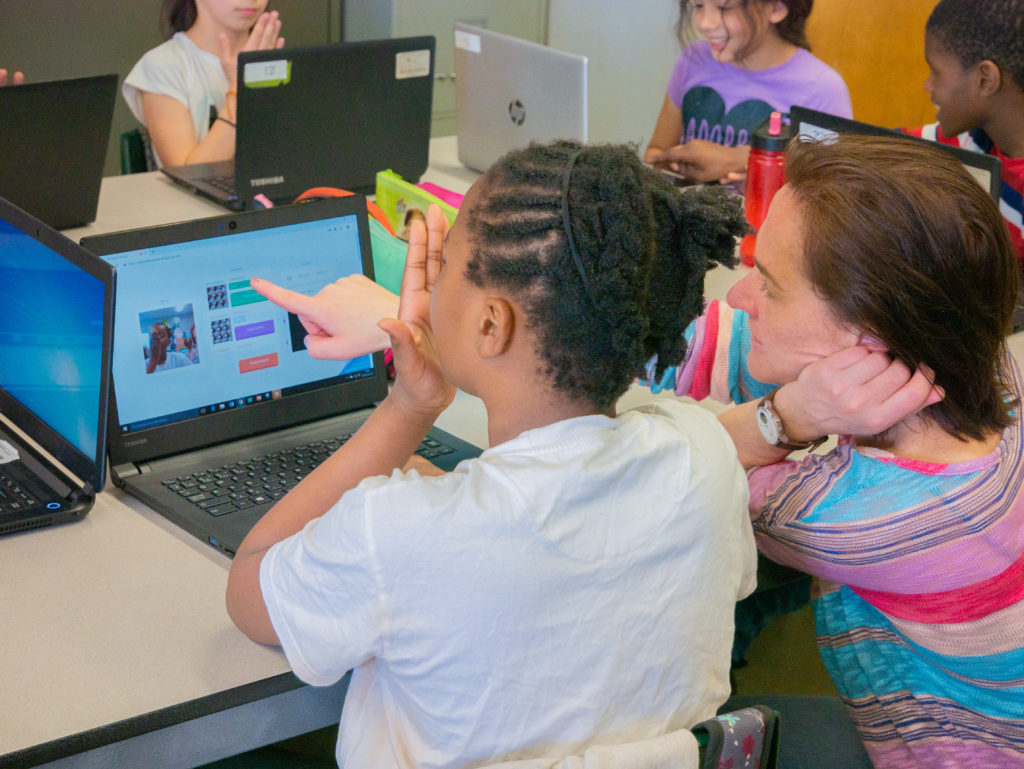
FabLab Onaki
Le FabLab Onaki de Gatineau a une double mission : développer la fierté identitaire et enseigner la fabrication d’objets connectés à des jeunes décrocheurs autochtones. Créé en 2018, l’organisme vient de recevoir une mention d’honneur dans la catégorie Renforcement des communauté lors des Prix de l’impact social 2020.
À Go, On lit!
Ce mouvement a été créé et propulsé par les Partenaires pour la réussite éducative dans les Laurentides (PREL). Il cherche à augmenter l’intérêt chez les adolescents pour la lecture en utilisant les médias sociaux pour les rejoindre. Pour sa troisième édition qui se déroulera jusqu’à Noël, pratiquement toutes les régions du Québec y prennent part.
Ose entreprendre
Cette organisme présente les projets Éducation à l’esprit d’entreprendre à l’école et la Semaine des entrepreneurs à l’école. Ceux-ci contribue à la culture entrepreneuriale, à la persévérance scolaire et à la réussite éducative, à la satisfaction et à l’épanouissement personnel, en plus de l’orientation professionnelle, en encourageant les jeunes à réaliser leur propre projet.
En complément :
– Centre de transfert pour la réussite éducative du Québec
– Des partenaires dans les régions
– La persévérance : moteur de réussite scolaire
6- Les défis supplémentaires de l’enseignement à distance
Tout comme le processus de motivation et de persévérance scolaire est complexe, la décision d’abandonner l’est tout autant. « On ne décroche pas du jour au lendemain. Le chemin qui mène au décrochage scolaire est généralement un long processus. Par contre, on sait qu’il y a souvent un élément déclencheur et que les interruptions dans le parcours scolaire sont des moments critiques », affirme Mme Mayer-Périard.
Voilà entre autres pourquoi tant de gens ont craint une hausse marquée du taux de décrochage scolaire au printemps 2020 lorsque les écoles ont fermé leurs portes en raison de la pandémie. Depuis la rentrée, on observe d’ailleurs que le ministère de l’Éducation déploie beaucoup d’efforts pour maintenir les écoles ouvertes.
Parallèlement, l’enseignement à distance s’organise aussi afin d’éviter une coupure en cas de fermeture de classe ou d’école. Les cours doivent continuer d’être dispensés. D’ailleurs, à l’automne 2020 au cours de la 2e vague de la pandémie, plusieurs élèves de la 3e à la 5e secondaire ont vécu l’alternance école-maison, une journée sur deux.

Il y a de quoi raviver les inquiétudes sur la persévérance des jeunes en contexte virtuel, et dans le contexte général actuel, pourrions-nous même affirmer.
Des chercheurs de partout sur la planète ont entrepris des études afin de mieux comprendre l’effet de l’enseignement à distance sur la motivation des élèves et des étudiants. Comme la pandémie est somme toute récente, la majorité des résultats sont préliminaires et restent à être analysés plus en détail.
Par exemple, tout près de nous, à l’Université Laval, Frédéric Guay et son collègue Érick Falardeau ont débuté une étude en juin dernier. Ils souhaitent répondre précisément à la question : La motivation est-elle affectée par le contexte d’enseignement en ligne?
Deux écoles secondaires de la région de Québec ont accepté de participer à l’étude, chacune mobilisant 300 élèves du 2e cycle du secondaire, âgés entre 15 et 18 ans, tous confinés à la maison pour suivre leurs cours. Les élèves ont complété des questionnaires en ligne et les chercheurs ont comparé les données obtenues en contexte d’enseignement à distance avec celles obtenues en 2010 au moyen des mêmes questionnaires, auprès du même groupe d’âge, dans un contexte d’enseignement régulier, en classe.
« Pendant l’enseignement en ligne, les élèves des deux écoles sondées ont révélé se sentir moins compétents en français et en anglais par rapport aux élèves sondés en 2010. Même si les enseignants fournissent un bon soutien affectif, il semble que les élèves manquent de rétroaction par rapport à leurs apprentissages pour se sentir compétents. Cette donnée est importante dans la mesure où la perception de compétence est un prédicteur important de la réussite scolaire », indique les résultats préliminaires.
« Ces données obtenues dans la première phase de confinement, en juin 2020, pourraient être mises en écho avec une nouvelle vague de questionnaires, au moment où plusieurs classes du secondaire alternent entre enseignement en classe et à distance », fait remarquer M. Guay.
Santé mentale
Mais, encore faut-il que les élèves soient dans un état d’esprit convenable pour vivre l’enseignement à distance. Devant la possibilité de devoir suivre des cours à partir de la maison, de nombreux facteurs influencent la motivation des jeunes québécois en ce moment.
Alors que plusieurs sont privés de contact avec leurs amis en-dehors des heures scolaires, privés d’activités parascolaires et d’autres activités de socialisation dans leur milieu, vivant de situations familiales pouvant être complexes, il est permis de croire que leur santé mentale en général puisse être affectée et que cela aura des répercussions sur les études.
Le gouvernement du Québec a d’ailleurs noté une hausse des demandes dans les services d’aide pour de l’anxiété et de la détresse psychologique liée à la crise sanitaire. Il a ainsi bonifié les services de façon à mieux répondre aux besoins spécifiques des jeunes de 0 à 25 ans et leur famille.
Souhaitons maintenant que les travaux de recherche se poursuivent pour bien saisir les effets de la pandémie sur les jeunes et ainsi pouvoir mettre en place de nouvelles mesures au besoin.
Conclusion
Bien que le thème de la persévérance scolaire soit bien documenté, ce dossier visait à poser un regard sur les déterminants principalement associés au milieu scolaire, tout en effleurant les défis associés au contexte pandémique actuel.
D’ailleurs, plusieurs spécialistes s’entendent pour dire qu’il est nécessaire de miser encore davantage sur le milieu scolaire pour favoriser la persévérance scolaire. Ainsi, plutôt que d’essayer d’intervenir sur tous les fronts à la fois, l’école pourrait devenir le point d’appui de la motivation chez les élèves.
Adoption de pratiques pédagogiques reconnues, proactivité afin d’encourager la formation de cercles d’amis positifs, proposition de projets mobilisants, interventions rapides et ciblées, collaboration avec les parents et le milieu communautaire; les équipes-écoles se doivent de s’engager dans des démarches rigoureuses, qui s’inspirent du monde de la recherche et qui tiennent compte des facteurs de protection réputés comme étant efficaces.
La mise en application de ces pratiques de façon constante et permanente pourra devenir un puissant vecteur de persévérance. Néanmoins, une prise en compte des réalités propres à chaque milieu est toujours nécessaire, afin de respecter les particularités de chacun; chaque détail pouvant faire une différence, comme nous l’avons vu à plusieurs reprises dans ce dossier.
La situation pandémique actuelle vient ajouter un facteur de risque dans l’équation et ses effets sur les élèves sont encore relativement méconnus. L’importance de maintenir un lien enseignant/élève fort, notamment par la rétroaction, ressort déjà comme facteur clé pour maintenir la motivation.
En conclusion, rappelons que tout milieu scolaire se doit d’être dynamique et stimulant, qu’il doit viser le plus haut niveau d’engagement des élèves par la mise en application de diverses pratiques reconnues, jumelée à des interventions « sur mesure » correspondant à sa réalité.




